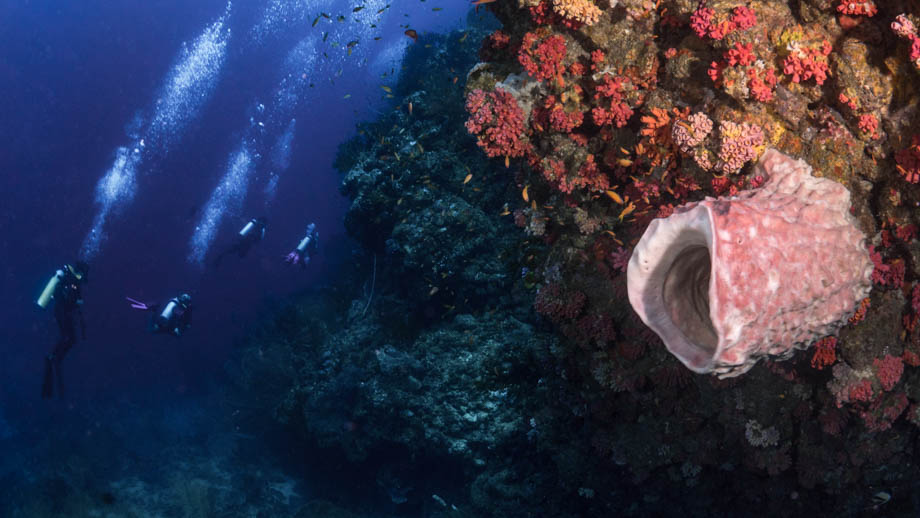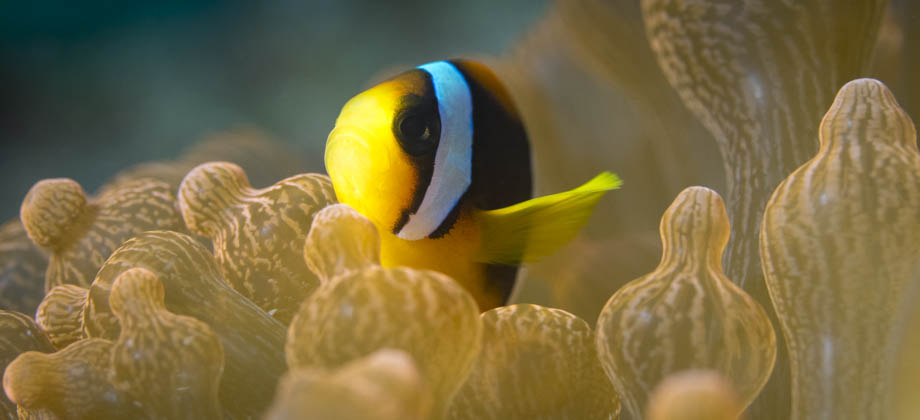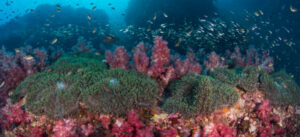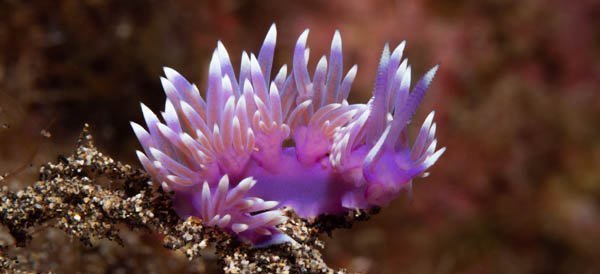Weh Island
Diving Weh
Weh island is located in the Indian Ocean, so shares the same diving season as other islands along the west coast of Malaysia and Thailand. Peak season runs from November to April, since winds tend to be calmer and there is less chance of rain, but diving is definitely possible all year-round. The types of diving are very diverse here and range from spectacular reef and wall formations that have giant gorgonian sea fans (Annella mollis) scattered around, relaxed and slow macro dives, to strong drift and decompression dives for the more experienced divers.


Interactive Location Map
My Top Three Dive Sites
1. Batee Tokong
Batee Tokong seems to be everyone's favourite dive site in Weh island and once you dive here, it is very easy to see why that is. Batee Tokong consists of a huge rocky pinnacle that breaks the surface of the ocean and drops steeply down to the seafan-littered underwater plateau 25 metres below. The scenery is spectacular and the marine life is very diverse and extremely rich, with cute yellow boxfish (Ostracion cubicus), plenty of lionfish (Pterois volitans) and scorpionfish hugging the reefs, a seemingly infinite number of redtoothed triggerfish (Odonus niger) always surrounding you, and baracudas, bluefin trevallies (Caranx melampygus), and tuna occasionally spotted in the distance.
Nudibranchs and moray eels are very common here, with almost every crack and crevice filled with either a giant moray (Gymnothorax javanicus), a fimbriated moray (Gymnothorax fimbriatus), a honeycomb moray (Gymnothorax favagineus), or a blue ribbon eel (Rhinomuraena quaesita). The occasional octopus (Order: Octopoda), other cephalopods, and peacock mantis shrimps (Odontodactylus scyllarus) can be also be glimpsed here. Shark Plateau is next to this dive site so be sure to keep your eyes peeled for blacktip reef sharks (Carcharhinus melanopterus) too!
2. The Canyon
The Canyon is known for its spectacular caves, swim-throughs and magnificent rock formations. Gorgonian sea fans can be found scattered everywhere as you follow the steep walls of the canyon in, surrounded by all sorts of marine life from the occasional peculiar robust ghost pipefish (Solenostomus cyanopterus), massive jacks and wrasses, to lionfish and scorpionfish way down below. Plenty of redtoothed triggerfish (Odonus niger) and solitary titan triggerfish (Balistoides viridescens) are normally found here. A lot of pelagics can also be spotted when the conditions are right-I have spotted several reef mantas (Manta alfredi) here. Don't forget to swim through the swim-through!
3. Pantee Penauteung
The rock formations of Pantee Penauteung are as spectacular as its sister-site, the canyon, with a series of vertical drop-offs and steep walls that enclose you on both sides. Giant gorgonian sea fans (Annella mollis) are abundant here and make a dramatic backdrop when glimpsing larger pelagics like sharks or the ocellated eagle ray (Aetobatus ocellatus). Once you reach the channel with a sandy bottom, keep an eye out for whip coral shrimps (Pontonides unciger) hiding on strands of whip corals. There are plenty of blackspotted pufferfish (Arothron nigropunctatus) and gem sea slugs (Goniobranchus geminus) scattered around here, as well as the occasional titan triggerfish (Balistoides viridescens) and clown triggerfish (Balistoides conspicillum).
Sophie Rickmers Wreck
Sophie Rickmers is a coral-covered wreck that is 134 metres long and has a bow that lies 55 metres deep in the Pria Laot bay. The ship was confiscated by the Dutch on the 10th of May 1940 at the onset of the Battle of the Netherlands, which is the name of the German military campaign for the invasion of the Low Countries and France during World War II. The crew of Sophie Rickmers made their way down to the vessel's water pumps and managed to reverse the pumps in time. The crew had decided that it was better to sink the ship than to allow the Dutch to take possession of it! Because the wreck lies so deep, the dive is a decompression dive by experienced divers only.









